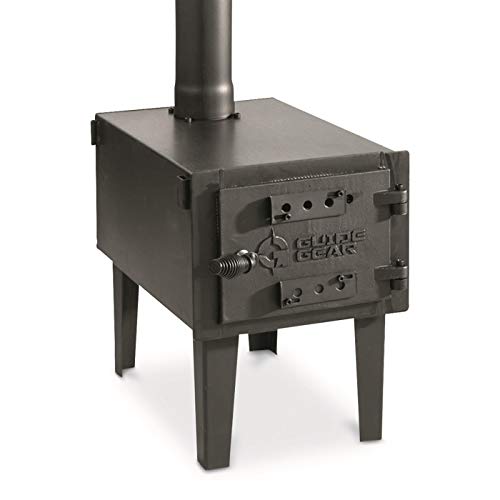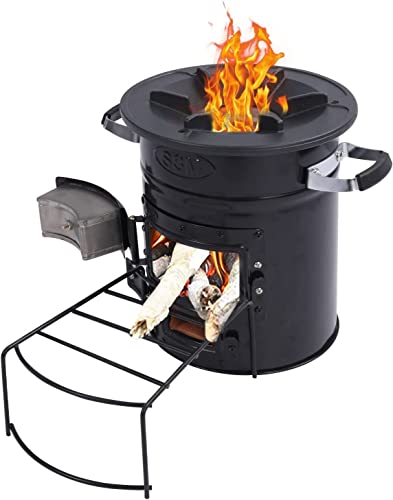How to Properly Start a Wood Burning Stove
 Wood woodburner stoves are a warm way to heat a room and save energy. They will require some maintenance.
Wood woodburner stoves are a warm way to heat a room and save energy. They will require some maintenance.
Many contemporary modern wood burning stove wood stoves comply with EPA emission guidelines. Look for an EPA sticker on the underside or next to the grate to make sure your stove won’t produce many harmful pollutants.
How to Start a Wood Fire
The scent and sound of a wood fire could be a wonderful addition to any house. It is essential to know how to create an effective fire on your stove. Improper techniques can result in the fire not burning effectively and can cause creosote or smoke. These tips can help you start an efficient fire that will heat up your home quickly and efficiently.
Before you begin a fire, you should check the condition of your logs and coals. If they are wet they could smother the flame and stop it from burning properly. You might also want to open the flue to let any ash that has been deposited into the stove.
Begin by putting a few small dry newspaper pieces into your stove. This will help to ignite the fire. Once the tinder and kindling are beginning to burn, you can add the larger kindling pieces on top. This should be done using an arc pattern so that there is air between each piece.
If your wood stove is equipped with an automatic combustion control it will automatically feed air to the fire as it expands. This will enable the fire to burn at a steady pace without having to open the stove’s door to keep it in check.
It is essential to avoid using excessive tinder as it can cause an unburned fire that burns at an excessive rate and doesn’t utilize the fuel as efficiently as it could. Once you’ve made a solid base in your stove with igniters, tinder, and embers begin the main flame by placing two large logs of the base on the grill. On the top of these base logs, stovesonline place a layer perpendicularly to them. This method of building a fire called a “top-down” fire will result in an effective and long-lasting fire that does not overtake the larger base logs.
Once your fire is well established shut off the damper and keep it shut. The fire can be smothered if the user opens the damper before it is fully established. It can also decrease the efficiency of the fire.
Adding Wood
Stoves aren’t just beautiful home decor pieces they can also help you save money by supplying efficient wood heat. They can be used by themselves or in conjunction with central heating or a furnace system to provide the extra heating required in large homes or houses with a lot of rooms. A lot of the stoves that are clean-burning employ a superior combustion process that separates the burning of volatile compounds from combustible gases and tar by providing air in two distinct stages. The first stage is to aid in the vaporization process, and the second stage is to provide fresh air that has been pre-heated. This improves the combustion process and helps to reduce the odors.
The amount of heat that you can get from your stove depends on the kind of wood used and the amount of moisture, as well as the size of the logs. The logs should be stored in a well-ventilated area for several months before you try to burn them, to give the wood a chance to dry. If the logs contain too much moisture, they will produce steam that is in essence wasted energy.
When you are burning the fire, you should add more wood to the pile at intervals, not all at one time. The addition of too much wood all at once could cause the temperature to rise in the firebox, causing an air vortex that pulls smoke and volatile compounds that are not burned back into the flames. This could decrease the effectiveness of your stove.
You should avoid the use of any other combustibles, such as paper or cardboard in your stove, because they are not wood and have very different physical properties and cannot be burned without causing dangerously high temperatures and a lot of emissions. You should not burn combustibles that are compressed, such as wood briquettes because they differ in chemical and physical composition from firewood. They are also not type-approved to be burned in wood burning stoves.
It is crucial to have a professional install and test your wood stove. A certified WETT technician can test your installation to ensure that it is safe and efficient. They will also check that your chimney is functioning properly. They provide maintenance services for your chimney and Stove Wood Burning to ensure they are in good shape. They can check for leaks in the areas accessible to your chimney, and fix any issues they spot. They will also make sure that all occupants of the house are aware of and follow the fire evacuation procedure in case of an accident.
Adjusting the Damper
When you’re not using your stove, a damper can control the amount of heat lost through the chimney. In addition to this it can also help you manage the fire. If the flue opens but the damper is closed the fire will not be able to burn as it should and smoke will erupt into your home. To get the best fire with the damper properly adjusted, you should experiment with different positions and observe how each one affects the flames.
It is important to keep your damper open to let air enter and exit the flue while a fire is burning. This allows the fire to get going and keeps it in good shape so that you can enjoy it for long periods of time. The right opening will also stop the fire from becoming starved of air, and also prevent it from blowing smoke.
To adjust your damper properly, you must first ensure that the fireplace has been preheated and that the wood stove is hot. This will ensure that the chimney stays warm and has an adequate draft. After these steps are completed, the damper on the wood stove can be adjusted.
After the fire has been burning for an extended period, close the damper approximately three quarters of the way. This will stop warm air in the room from venting up the chimney while still allowing the smoke to escape out of the wood stove.
This is the best way to keep your fire lit and keep it from getting too hot. The draft could be stopped if you close the damper too far, but a cold wind could enter your home in the event that the damper is left open.
By placing your hands on the top of the flue pipe will tell you how much the damper has opened. If you feel a slight breeze pushing against your palm The damper is most likely to be open.
The damper settings can differ a little from one stove to the next, and even between different kinds of wood. Playing around with different settings will give you an idea of what you should look for, but you may have to keep adjusting it until you have found the ideal setting for your stove.
Clean up
After an incident, it is essential to clean the stove and flue. This will reduce the risk of an ensuing fire in the chimney which is the main cause of fires caused by wood stoves. Creosote, a sticky material which can build up in the stovepipe, is very dangerous. Unburned and moist particles of modern wood burning stoves that are unable to escape the flame are the reason for this substance. It can also be caused by improperly lit fires.
 Regular cleaning helps to keep away the buildup of creosote. The most effective method for doing this is by sweeping the chimney at least once a year. It is also recommended that you have your fireplace and stove professionally cleaned and inspected at least once a every year.
Regular cleaning helps to keep away the buildup of creosote. The most effective method for doing this is by sweeping the chimney at least once a year. It is also recommended that you have your fireplace and stove professionally cleaned and inspected at least once a every year.
Also, it’s recommended to clean the ash tray and the grates regularly. It is a good idea to use only seasoned wood for burning, as it will create less creosote and less ash. It is also a good idea to avoid burning paper, cardboard or plastic items. These can release chemicals that can be dangerous for the flue and air, and could be released into your home.
The glass on the wood stove has to be cleaned frequently as well. Most newer corner wood burning stove stoves have self-cleaning windows, so they do not require as much scrubs. You can make use of stove glass cleaners on the window if you’re not getting the glass as clean as you would like on your wood stove.
Other helpful tips to maintain your wood stove include turning the vent off when you’re not using it and cracking a window or door to increase air flow. This will keep the fire burning more hot and more efficiently, since it won’t need to work as hard to circulate air. It is recommended to not stack logs or place them in the fire for long periods of time as this could lead to splitting and warping. Finally, it is best to not use compressed combustible logs in your wood stove, as the paraffin they contain can melt and then flow into the flue which could cause damage to the stove.
